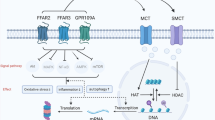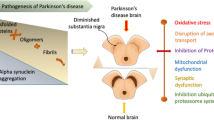Abstract
Parkinson's disease is a progressive neurodegenerative disorder in which dopaminergic neurons located in the substantia nigra are gradually lost. Currently, combined treatment strategies are receiving increasing attention as potential therapeutic approaches for Parkinson's disease. This study aimed to evaluate the potential effects of exosomes released from SH-Sy5y cells and the liposomal form of L-dopa on Parkinson's rat models. Twenty-five male Wistar albino rats, in five groups, were included in this study. Parkinson's disease was induced through microinjection of 6-OHDA (2.5 mg/mL) into the right substantia nigra. The exosomes released from the SH-Sy5y cell line were isolated and administered (0.2 µg/5 µL) alone or in combination with the liposomal form of L-Dopa (80 mg/kg) to the defined model groups. Behavioral tests and molecular assays were conducted to evaluate the expression levels of tyrosine hydroxylase (TH) and dopamine receptor D2 (DRD2). The rats in the groups receiving the combined liposomal form of L-Dopa and exosome treatment and the liposomal form of L-Dopa alone showed a significant improvement in their movement ability (p < 0.05). At molecular levels, these two groups also exhibited significant increases in Th (0.005 ± 0.001) and Drd2 (0.002 ± 0.0001) expression compared to controls (p < 0.05). The observed alterations of Th and Drd2 expression were not statistically significant in exosome- and L-Dopa-treated groups. The current study shows that exosome-derived neuronal cells and liposomal form of L-Dopa can protect different cells against pathological complications such as Parkinson’s disease.





Similar content being viewed by others
References
Alvarez-Erviti L, Seow Y, Schapira A, Gardiner C, Sargent I, Wood M, Cooper JM (2011) Lysosomal dysfunction increases exosome-mediated alpha-synuclein release and transmission. Neurobiol Dis 42:360–367. https://doi.org/10.1016/j.nbd.2011.01.029
Antimisiaris SG, Mourtas S, Marazioti A (2018) Exosomes and exosome-inspired vesicles for targeted. Drug Deliv Pharm 10:218. https://doi.org/10.3390/pharmaceutics10040218
Bilia AR, Guccione C, Isacchi B, Righeschi C, Firenzuoli F, Bergonzi MC (2014) Essential oils loaded in nanosystems: a developing strategy for a successful therapeutic approach. Evidence-Based Complementary and Alternative Medicine 2014:651593. https://doi.org/10.1155/2014/651593
Chen HX et al (2020) Exosomes derived from mesenchymal stem cells repair a parkinson’s disease model by inducing autophag. Cell Death Dis 11:288. https://doi.org/10.1038/s41419-020-2473-5
Chen Y, Lian Y, Ma Y, Wu C, Zheng Y, Xie N (2017) The expression and significance of tyrosine hydroxylase in the brain tissue of parkinson’s disease rats. Exp Ther Med 14:4813–4816. https://doi.org/10.3892/etm.2017.5124
Chierchia A et al (2017) Secretome released from hydrogel-embedded adipose mesenchymal stem cells protects against the Parkinson's disease related toxin 6-hydroxydopamine European journal of pharmaceutics and biopharmaceutics : official journal of Arbeitsgemeinschaft fur Pharmazeutische Verfahrenstechnik eV 121:113–120. https://doi.org/10.1016/j.ejpb.2017.09.014
DeMaagd G, Philip A (2015) Parkinson's disease and its management: part 1: disease entity, risk factors, pathophysiology, clinical presentation, and diagnosis P T 40:504–532
Drago D, Cossetti C, Iraci N, Gaude E, Musco G, Bachi A, Pluchino S (2013) The stem cell secretome and its role in brain repair. Biochimie 95:2271–2285. https://doi.org/10.1016/j.biochi.2013.06.020
Gandhi KR SA (2020) Levodopa (L-Dopa) In: StatPearls [Internet] Treasure Island (FL): StatPearls Publishing
Gao W, Hu C-MJ, Fang RH, Zhang L (2013) Liposome-like nanostructures for drug delivery. J Mater Chem B 1:https://doi.org/10.1039/C1033TB21238F
Gitler AD, Dhillon P, Shorter J (2017) Neurodegenerative disease: models, mechanisms, and a new hope. Dis Model Mech 10:499–502. https://doi.org/10.1242/dmm.030205
Haavik J, Toska K (1998) Tyrosine Hydroxylase and Parkinson’s Disease. Mol Neurobiol 16:285–309. https://doi.org/10.1007/bf02741387
Huh E, Choi JG, Sim Y, Oh M (2019) An integrative approach to treat parkinson's disease: Ukgansan complements L-Dopa by ameliorating dopaminergic neuronal damage and L-dopa-induced dyskinesia in mice. Front Aging Neurosci 10
Kucheryanu VG, Yurasov VV, Kryzhanovskii GN, Nikushkin EV (1997) Zhigal’tsev IV, Kaplun VP, Shvets VI. Effect of Liposomall-Dopa on the Parkinson’s Syndrome in Mice Bulletin of Experimental Biology and Medicine 123:24–27. https://doi.org/10.1007/BF02764369
Kumar P, Kandoi S, Misra R, Vijayalakshmi S, Rajagopal K, Verma RS (2019) The mesenchymal stem cell secretome: A new paradigm towards cell-free therapeutic mode in regenerative medicine. Cytokine & Growth Factor Rev 46:1–9. https://doi.org/10.1016/j.cytogfr.2019.04.002
Mentkowski KI, Snitzer JD, Rusnak S, Lang JK (2018) Therapeutic potential of engineered extracellular vesicles. AAPS J 20:50. https://doi.org/10.1208/s12248-018-0211-z
Mishra A, Singh S, Shukla S (2018) Physiological and functional basis of dopamine receptors and their role in Neurogenesis: possible implication for Parkinson’s disease. J Exp Neurosci 12:1179069518779829–1179069518779829. https://doi.org/10.1177/1179069518779829
Park S, Ahn ES, Kim Y (2015) Neuroblastoma SH-SY5Y cell-derived exosomes stimulate dendrite-like outgrowths and modify the differentiation of A375 melanoma cells. Cell Biol Int 39:379–387. https://doi.org/10.1002/cbin.10401
Pick H, Alves AC, Vogel H (2018) Single-vesicle assays using liposomes and cell-derived vesicles: from modeling complex membrane processes to synthetic biology and biomedical applications. Chem Rev 118:8598–8654. https://doi.org/10.1021/acs.chemrev.7b00777
PubChem [Internet]. Bethesda (MD): National Library of Medicine (US), National Center for Biotechnology Information; 2004-. PubChem Compound Summary for CID 6047, Levodopa; [cited 2020 Dec 22]. Available from: https://pubchem.ncbi.nlm.nih.gov/compound/Levodopa
Rizek P, Kumar N, Jog MS (2016) An update on the diagnosis and treatment of Parkinson disease. CMAJ 188:1157–1165. https://doi.org/10.1503/cmaj.151179
Safakheil M, Safakheil H (2020) The effect of exosomes derived from bone marrow stem cells in combination with rosuvastatin on functional recovery and neuroprotection in rats after ischemic stroke. J Mol Neurosci 1–14
Sheikh A, Sheikh K (2020) The expression change of glial fibrillary acidic protein and tyrosine hydroxylase in substantia nigra of the wistar rats exposed to Chlorpyrifos: a novel environmental risk factor for Parkinson’s disease. Exp Brain Res 238:2041–2051. https://doi.org/10.1007/s00221-020-05868-x
Spuch C, Navarro C (2011) Liposomes for targeted delivery of active agents against neurodegenerative diseases (Alzheimer's Disease and Parkinson's Disease). J Drug Deliv 2011:469679–469679.https://doi.org/10.1155/2011/469679
Xicoy H, Wieringa B, Martens GJM (2017) The SH-SY5Y cell line in Parkinson’s disease research: a systematic review. Mol Neurodegener 12:10. https://doi.org/10.1186/s13024-017-0149-0
Zadeh MM, Motamed N, Ranji N, Majidi M, Falahi F (2016) Silibinin-induced apoptosis and downregulation of MicroRNA-21 and MicroRNA-155 in MCF-7 human breast cancer cells. J Breast Cancer 19:45–52. https://doi.org/10.4048/jbc.2016.19.1.45
Zhang ZN et al (2017) Subcutaneous rotenone rat model of Parkinson’s disease: Dose exploration study. Brain Res 1655:104–113
Author information
Authors and Affiliations
Contributions
P. Zarrin performed the experiments and wrote the manuscript draft; M. Dehghani Ashkezari designed and directed the project, analyzed the data, and revised the article; S.M. Seifati validated the results, and contributed to the interpretation of the results and writing the article.
Corresponding author
Ethics declarations
Ethics Approval and Consent to Participate
The study procedures were approved by the Ethical Committee of Islamic Azad University. The ethical code assigned for this study was IR.IAU.K.REC.1398.088.
Consent for Publication
All authors declare their consent to participate in this work and publish it.
Conflict of Interest
The authors declare that they have no conflict of interest.
Additional information
Publisher's Note
Springer Nature remains neutral with regard to jurisdictional claims in published maps and institutional affiliations.
Rights and permissions
About this article
Cite this article
Zarrin, P., Dehghani Ashkezari, M. & Seifati, S.M. Liposomal Form of L-Dopa and SH-Sy5y Cell-Derived Exosomes Modulate the Tyrosine Hydroxylase/Dopamine Receptor D2 Signaling Pathway in Parkinson's Rat Models. J Mol Neurosci 71, 2583–2592 (2021). https://doi.org/10.1007/s12031-021-01853-3
Received:
Accepted:
Published:
Issue Date:
DOI: https://doi.org/10.1007/s12031-021-01853-3




